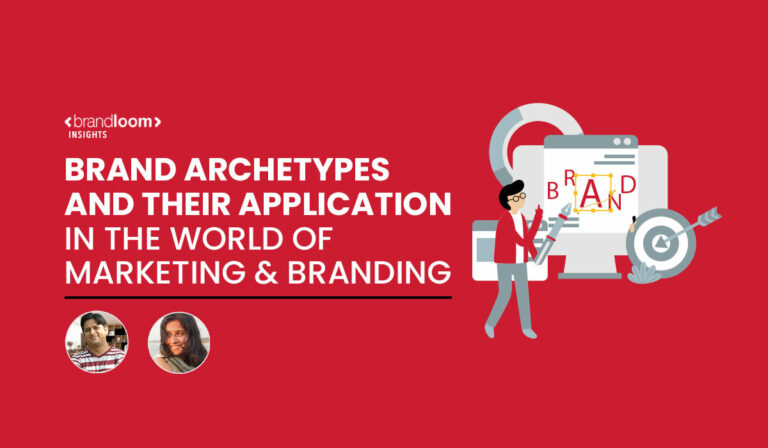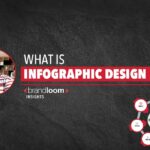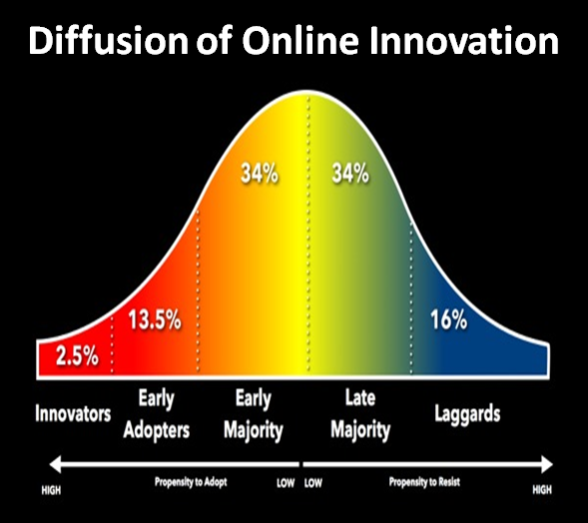Doesn’t your mind scream “hero” every time you think of Superman?
Don’t you expect to be blown away by the wizarding world of Harry Potter?
As humans, we relate to certain types of people because we identify with their values.
Well, the same thing happens to brands too- people take a shine to brands they can identify with because they relate to the archetype that the brand represents.
Today, we will look at the 12 brand archetypes- and how marketers can leverage them to connect better with their audiences.
We always say that in order to resonate with its audience, a brand must behave like a person.
In order to flesh out its personality, we must understand what type of person a brand can be.
Understanding what archetype a brand falls into will make this task so much easier.
If you want to understand what archetype suits your brand best, and how you can relate to your audiences- you can talk to BrandLoom’s branding experts.
Before we define brand archetypes- let us look at what exactly is an archetype.
What does Archetype mean? Brand Archetype definition
The wisecracking comic relief, the dashing renegade, the noble & pure-hearted queen who will usher in a new tomorrow- these are archetypes.
They are characters defined by behaviors and traits that make them relatable and recognizable by audiences.
The concept of archetype was popularized by legendary psychiatrist Carl Jung, the founder of analytical psychology.
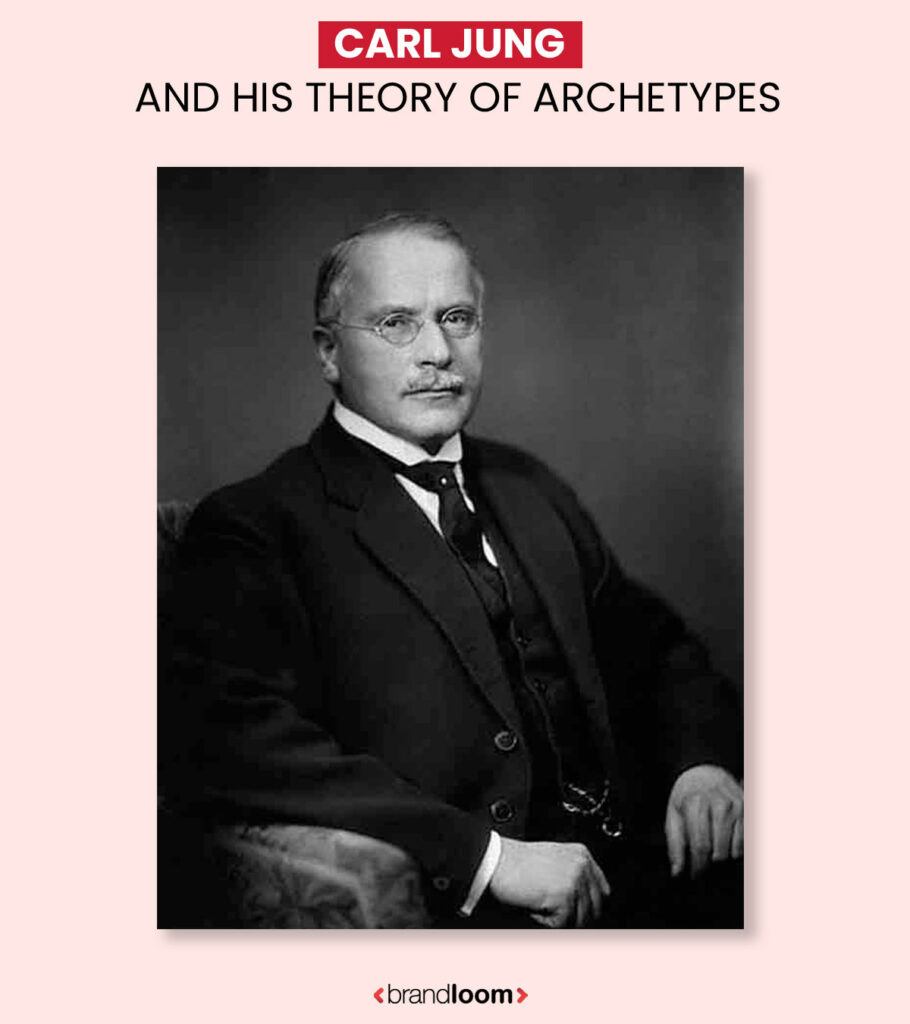
He said that archetypes are models for a set of personality traits and behaviors which we carry in our unconscious.
Each person exhibits the dominant trait of one archetype- and some lesser ones from others.
Jung opined that a person’s actions and relationship with the world at large are greatly influenced by the archetypes that govern them.
What are Brand Archetypes?
The concept of archetypes has been extremely influential in the field of branding.
Since every brand comes with its distinct personality, it belongs to one of the 12 Jungian archetypes.
Understanding these archetypes helps us flesh out a brand’s identity and forms the basis for its communication strategy.
If you want to do a branding exercise, you must devote time to figuring out what archetype (or 2 archetypes) your brand falls under.
Our team can help you get a better understanding of your brand’s archetype.
The brand archetype wheel
In this wheel, we divide the 12 brand archetypes into 4 broader groups. Each group is defined by its underlying desire. We will elaborate on all twelve and look at brand archetype examples for each.
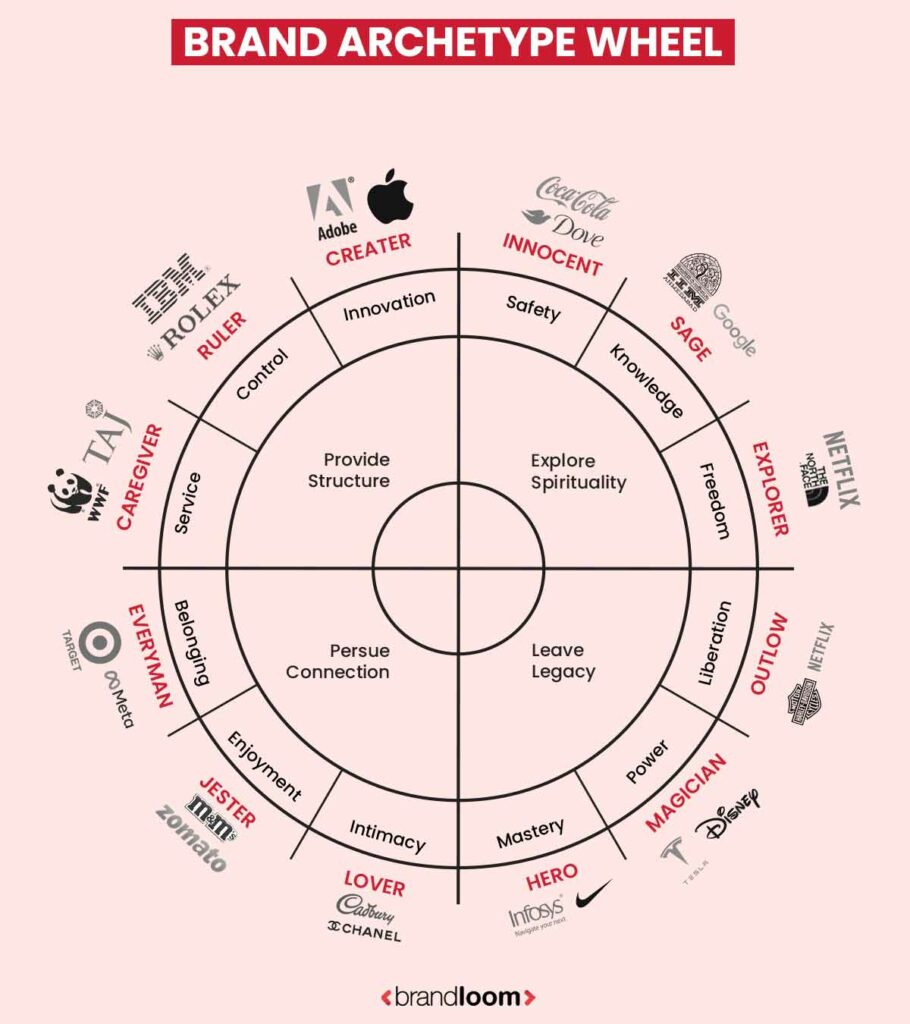
The 12 brand archetypes
In marketing, we look at 12 main archetypes to define brands: innocent, sage, explorer, outlaw, magician, hero, lover, jester, everyman, caregiver, ruler, and creator. Let us look at them one by one.
1. The Innocent
These are the brands that have an aura of wholesomeness. An innocent is optimistic and yearning for safety and coziness- they are craving for paradise.
The Innocent brand archetype can often be associated with romantic and idealist notions. Brands like Dove and Whole Foods are good examples of the innocent archetype.
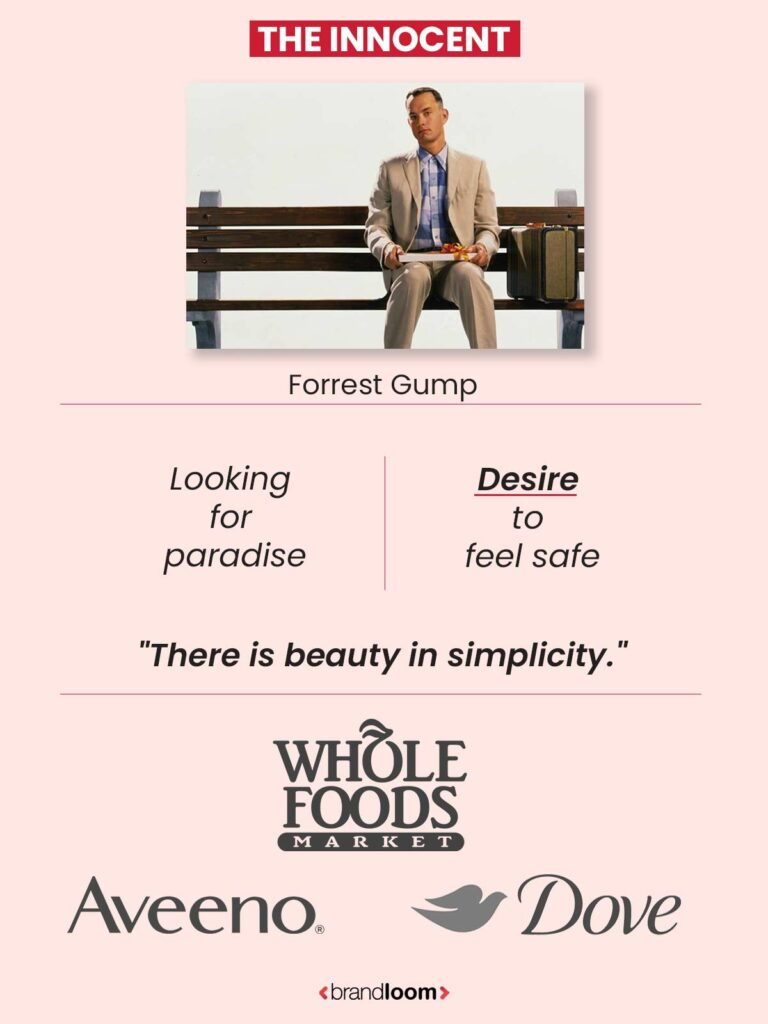
2. The Sage
The sage is looking for knowledge and the truth. Known for their wisdom, they act as guides and trusted advisors.
The sage brand archetype is associated with research, news, education, and mentorship. Brands like Harvard University and Google are sage brand archetype examples.
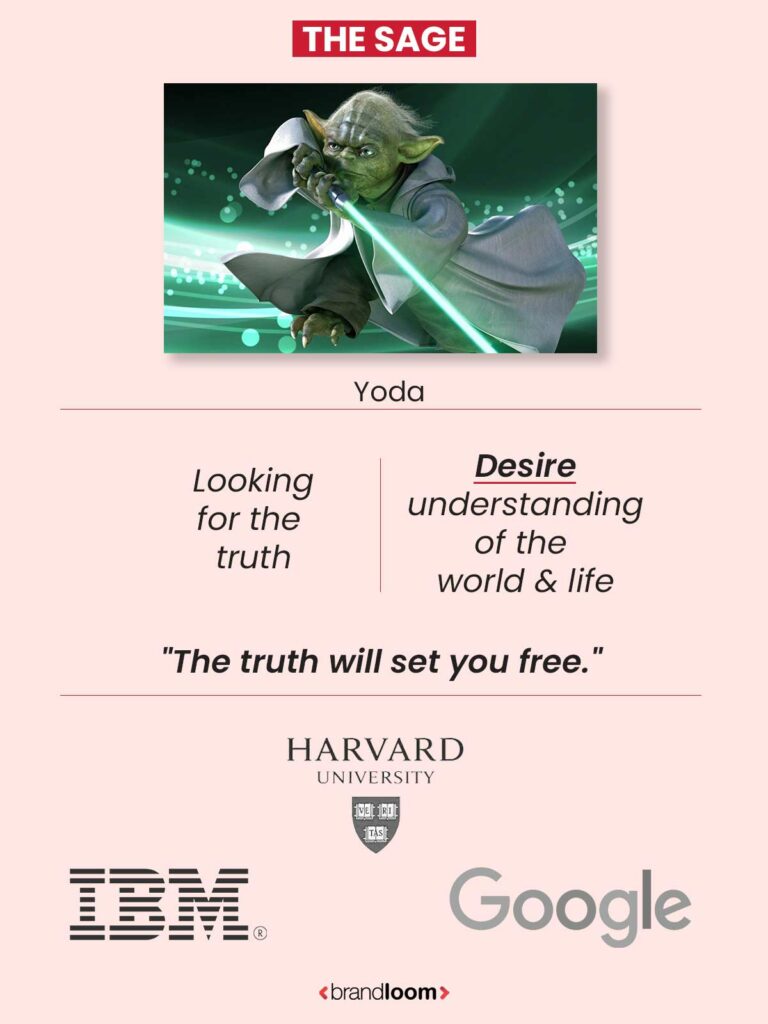
3. The Explorer
An explorer wants to lead an authentic life and discover new things. They have an adventuring streak but do not wish to cause disruption where they go.
Explorer brands are associated with adventure, traveling, and the outdoors. Some good examples are Patagonia, Timberland, and Jeep.
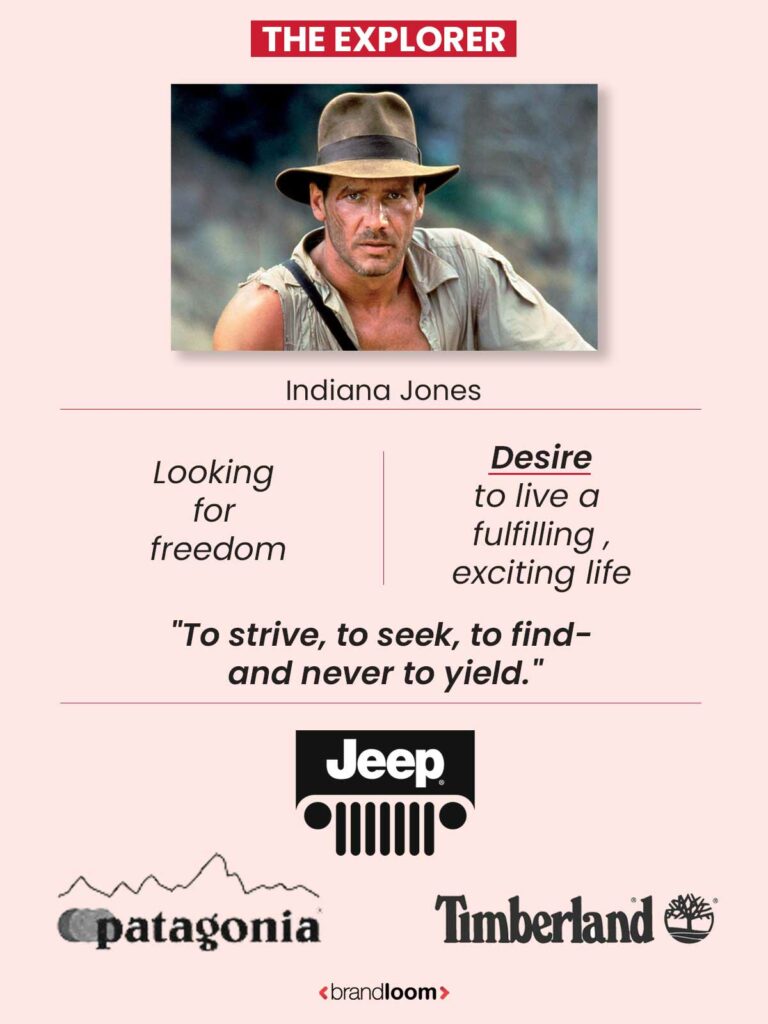
4 The Outlaw
The outlaw or the rebel is all about breaking rules and blazing their own trail. They are often romanticized – as they are the very embodiment of the thrill of the forbidden.
Outlaws abhor conformity and tyranny and stand for revolution and liberation.
Brands that are boldly different and are not afraid to shake things up belong to this group. Good examples of outlaw brand archetypes are Harley Davidson and Virgin Group.
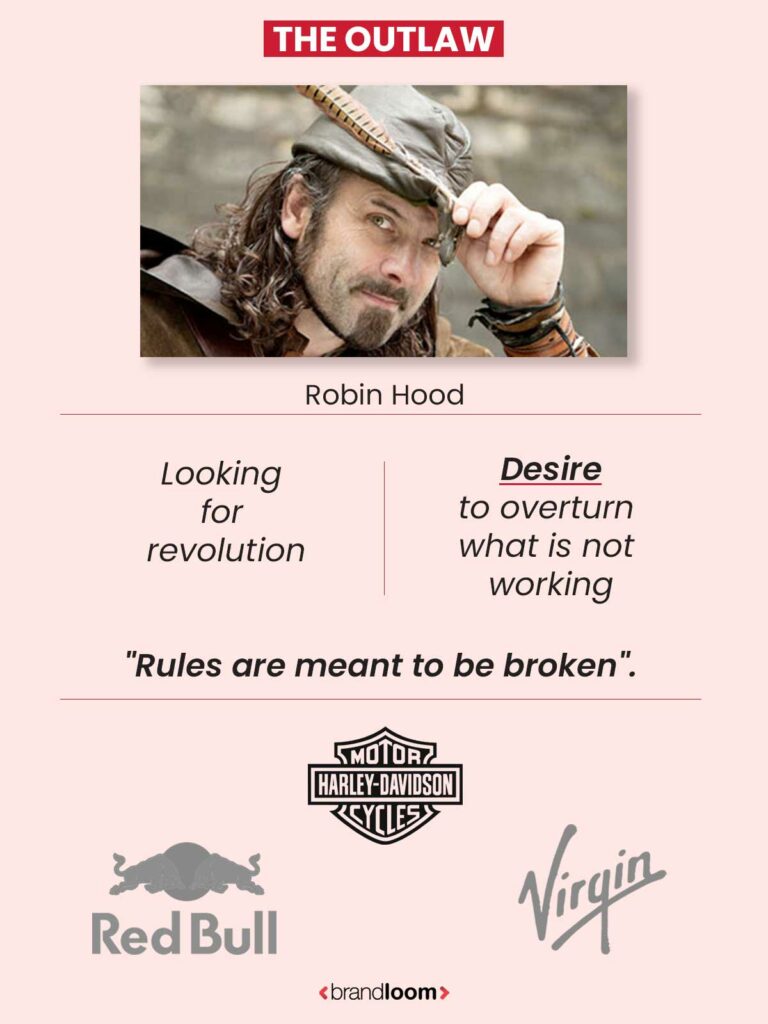
5 The Magician
Magicians transform your world or open up a new world that inspires awe. They are known to aid growth and are powerful allies to have on your side.
They are visionaries who are often at the top of their field and revered (and feared) across the world. Some magician archetype brand examples are Disney, MAC Cosmetics, and Tesla.
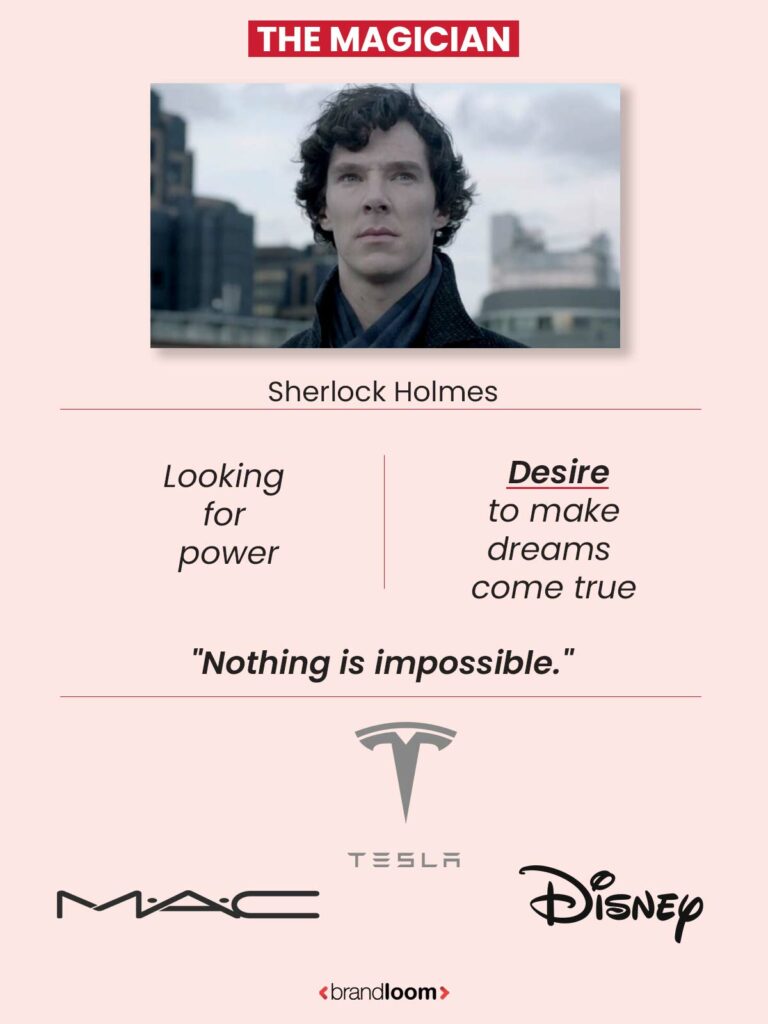
6 The Hero
The hero stands for mastery, strength, determination, and overcoming obstacles. Also known as warrior, they empower people and are inspiring figures who always move forward.
The hero archetype is popular for sports, outdoor equipment, and completing journeys. Some hero brand archetype examples are Nike, DHL, and Tag Heuer.
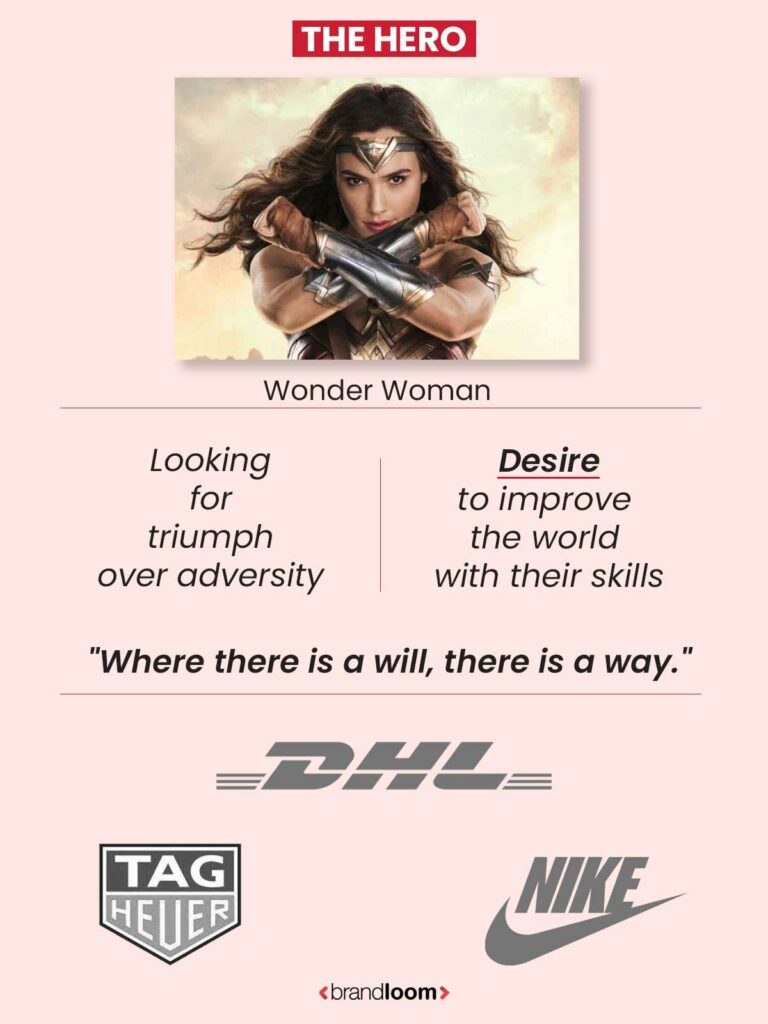
7 The Lover
When you are looking for intimacy, the lover archetype is what you need. The person who most famously embodied it is Marilyn Monroe in many of her iconic roles.
The Lover is passionate, sensuous, magnetic, and often indulgent. Some great examples of lover archetype brands are Chanel, Godiva Chocolate, and Victoria’s Secret.
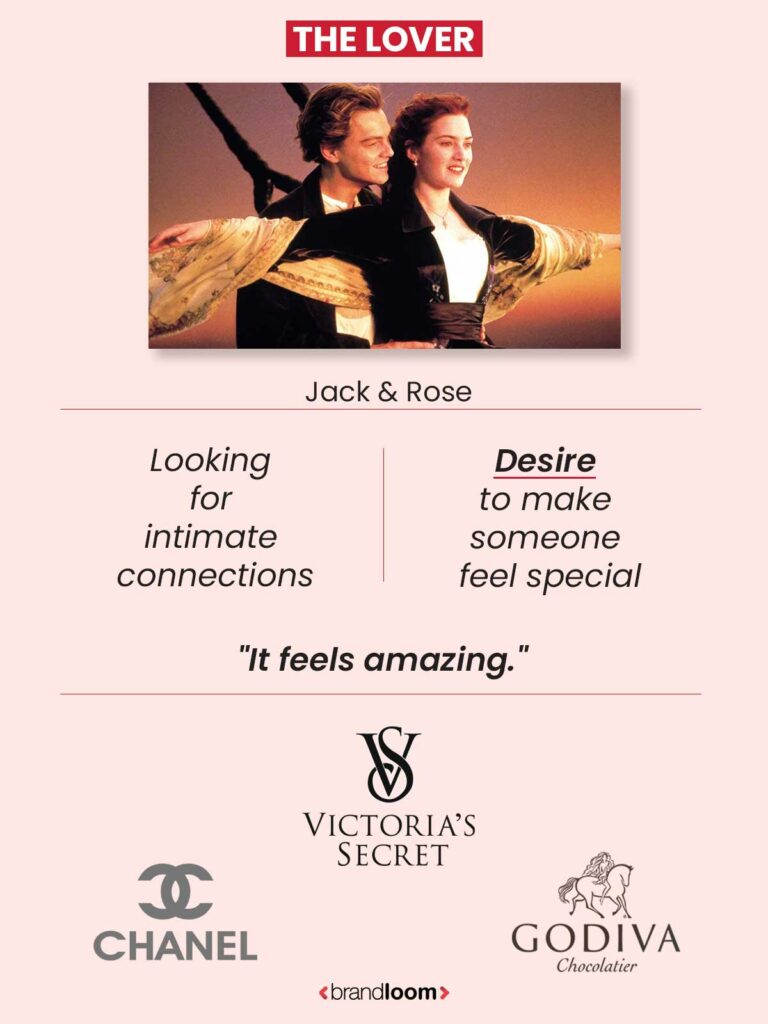
8 The Jester
The jester or the fool is the figure that is at peace with the contradictions of the world and has developed a sense of humor about it.
Jesters help people discover the lighter side of life and crack a life. They are often the life of the party, and prompt people to be more spontaneous.
Jester brands are brimming with energy, bright, funny, and all about embracing life with all its absurdities. Some great examples of the jester brand archetype are Old Spice, Geico, and Ben & Jerry’s.
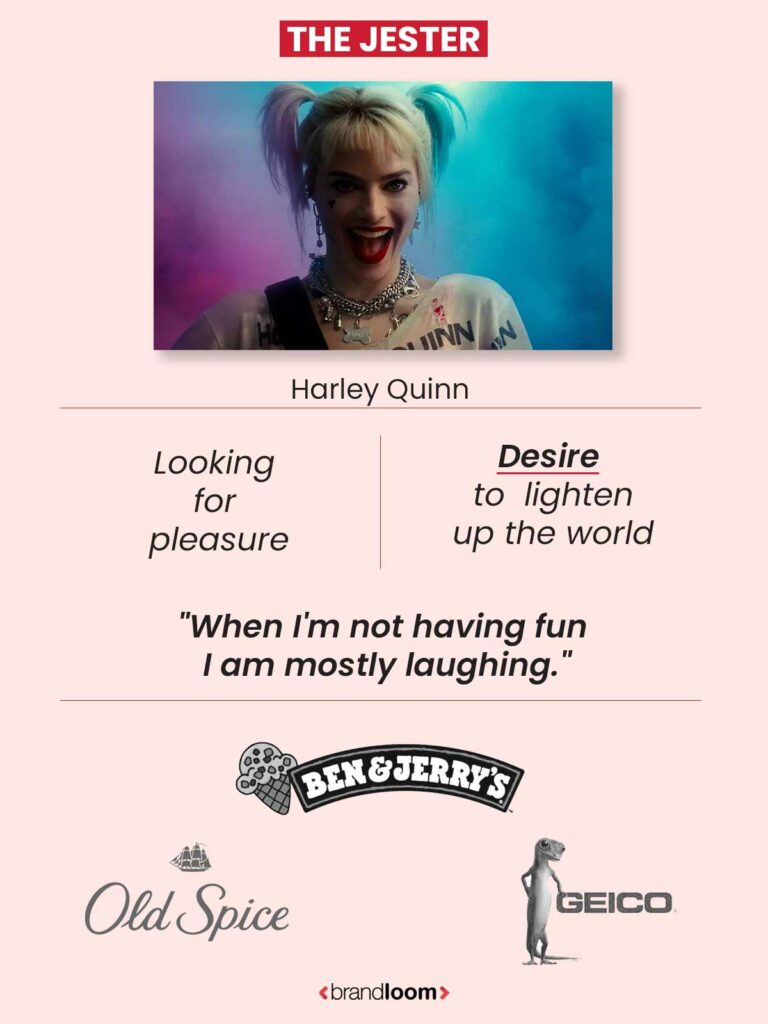
9 The Everyman
The everyman is the person next door who is instantly relatable. This archetype believes in equality and is all about forging relationships and shunning elitism.
They are supportive, faithful, and have a strong desire for belonging. Examples of the everyman brand archetype are IKEA, McDonald’s, and Gap.
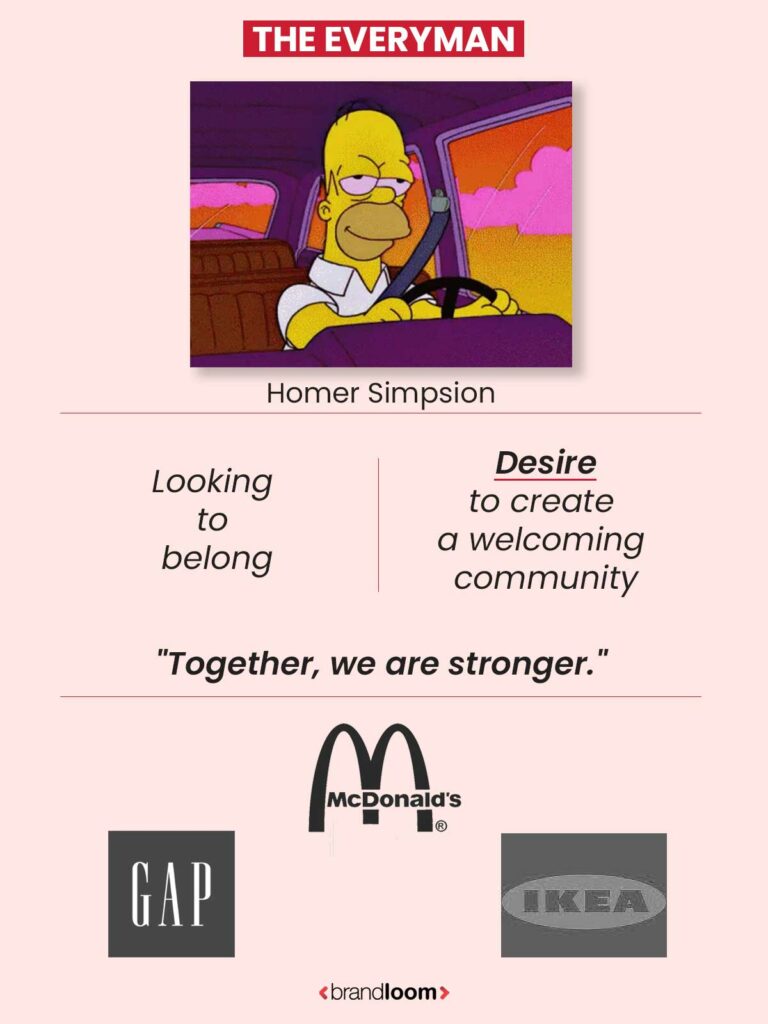
10 The Caregiver
The caregiver is the supportive friend who selflessly serves. “Motherly” people show many traits of this archetype.
Characterized by generosity and compassion, they are always the responsible ones you can trust to fall back on.
Brands from sectors like healthcare, non-profits, and children’s education often fall in this category. Some good examples of the caregiver brand archetype are WWF, Unicef, and Johnson & Johnson.
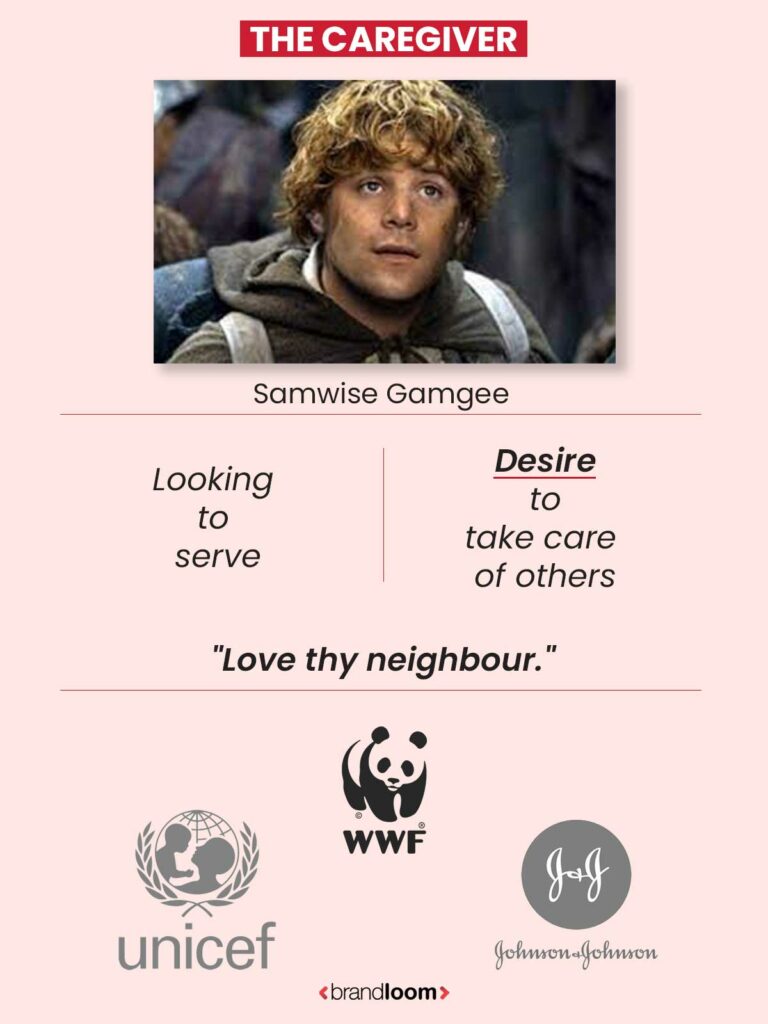
11 The Ruler
The archetypical king or queen- brings order to chaos and brings prosperity to those they serve. Rulers are characterized by refinement, assertiveness, and supreme confidence.
Rulers often emerge when things are falling apart, and they successfully help you navigate through the chaos around them.
Many luxury brands- especially cars and watches fall in this category. Ruler brand archetype examples are Microsoft, Rolex, and Mercedes.
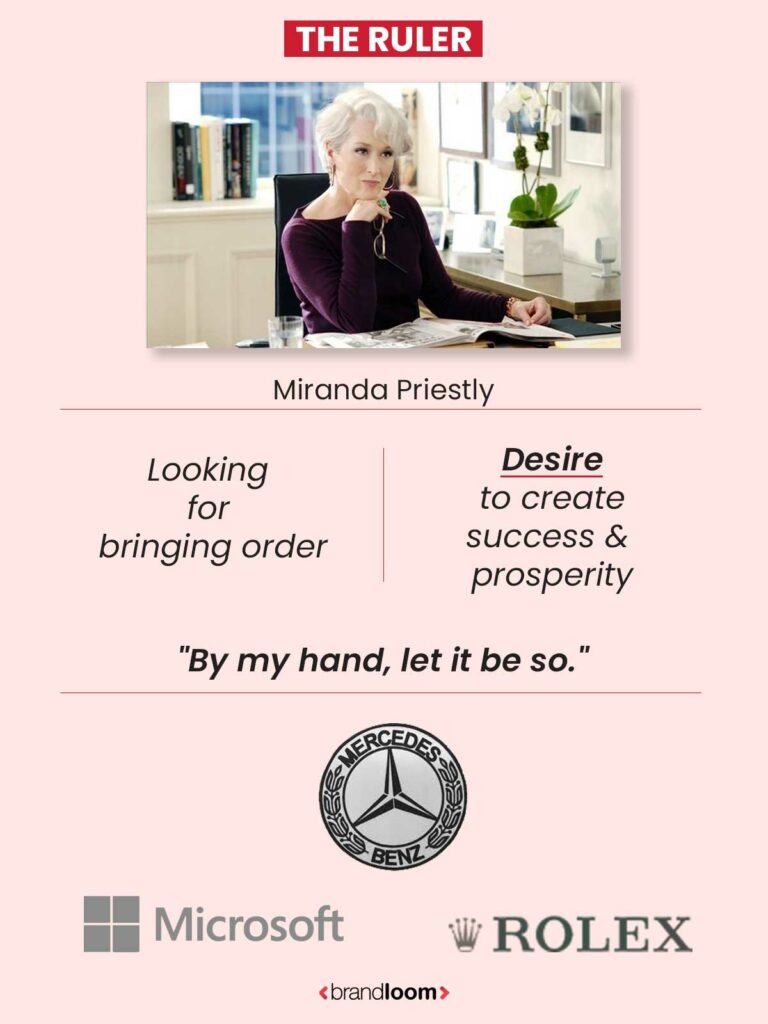
12 The Creator
And finally- the creator or the inventor. As the name suggests, this archetype is creative, imaginative, and innovative.
They take pride in being “the original” in any field and are pathbreakers whose footsteps others tend to follow.
The creator encourages expressing others artistically. Many technology or artistic brands fall in this category. Some great examples of the creator brand archetype are Adobe, Apple, and Lego.
Now that you know about the 12 archetypes of the branding world, it is time to figure out what is your brand’s archetype.
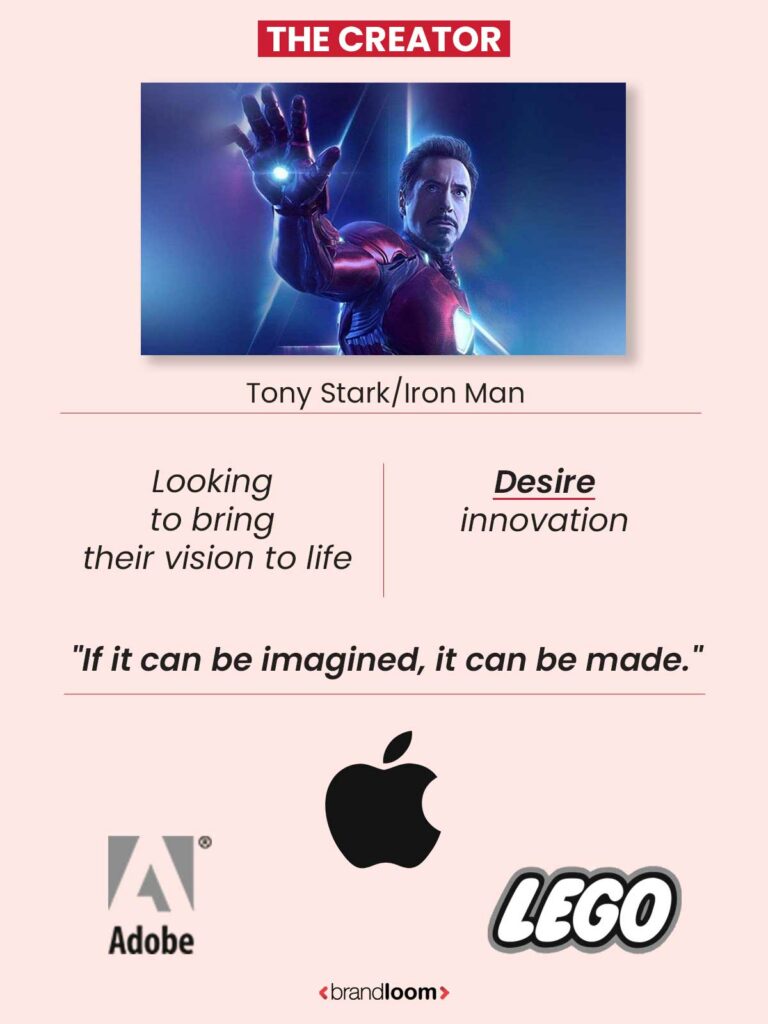
How to determine your brand archetype?
It is best to trust the branding experts to help you figure out your brand’s archetype. If you want to take on this task- here is our step-by-step guide to doing it.
1 Look at your brand’s mission and vision
What change does your brand want to bring about? Every company exists for a purpose that goes beyond making money. The brand’s mission and vision statements tell you all that. If your brand’s goals align closely with that of an archetype- you are closer.
Let us look at Nike. Its mission statement is: “to bring inspiration and innovation to every athlete* in the world.” It aims to empower people to do better, and that is the trademark of the hero. Hence, Nike’s brand archetype is the hero.
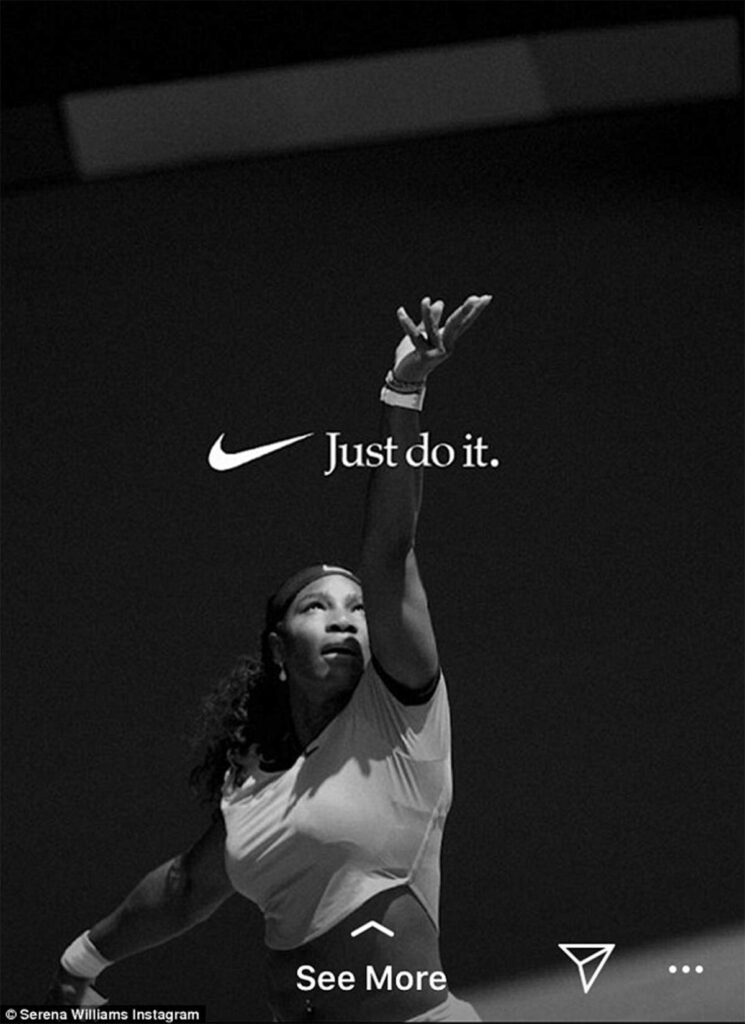
2 Profile your audience
Now comes the most important part of any branding exercise- understanding the target audience. Start with demographic details, and then get in-depth:
- Gender
- Age
- Sex
- Nationality
- Location
- Income
- Likes
- Dislikes
- Pain points
- Desires
What problem do they need to solve? Think about how your offerings will enhance their lives. The way you impact your customer’s life will give you a clue about what’s your brand archetype.
For example, Apple’s products can help artists render their work in stunning ways. With an iPhone, a filmmaker can shoot a great movie or take a great picture.
With a Mac computer, graphic artists can create some exquisite art which is not possible with other machines. Since it enables artists to bring their vision to life- Apple’s brand archetype is the creator.
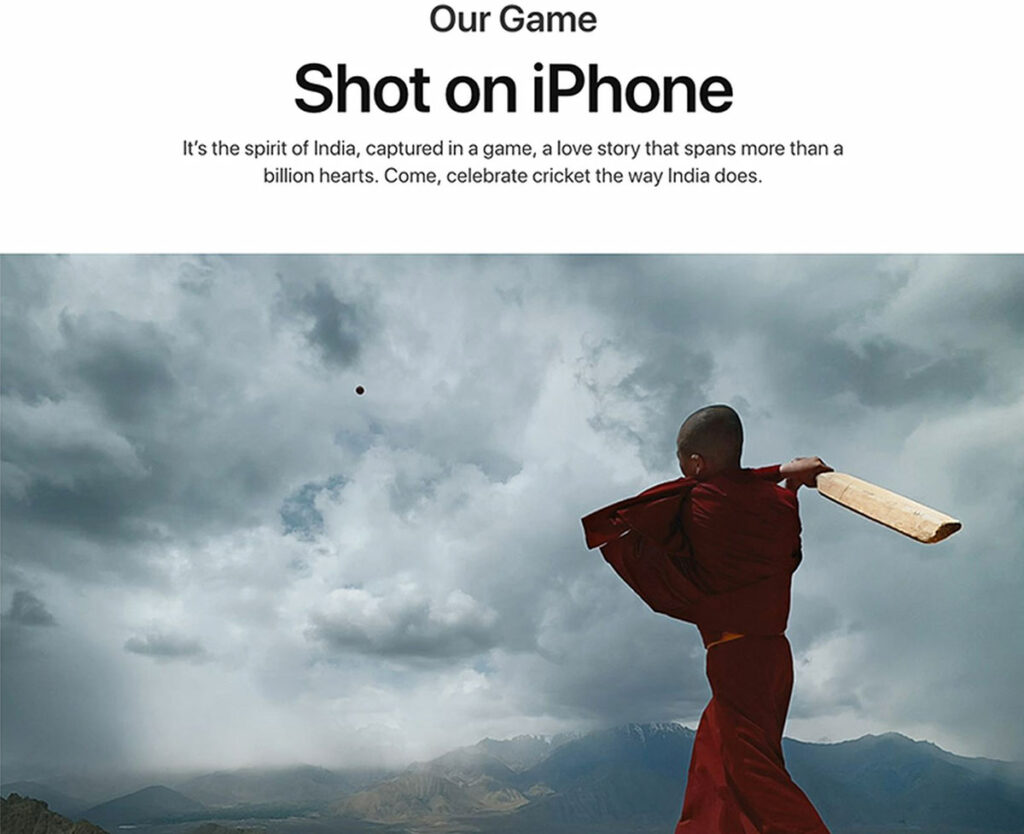
3. Look at the emotional side of what you are offering as a brand
How do you want your audience to feel when they think of your brand? What mind space do you want to put them into?
The emotions you want to invoke will align with the desires of an archetype- which will give you a clue.
Let’s look at Snickers. It has a very funny way of demonstrating how you are not yourself when you are hungry.
Unlike other chocolate brands, it is irreverent and humor is its trademark. It is a great Jester brand.
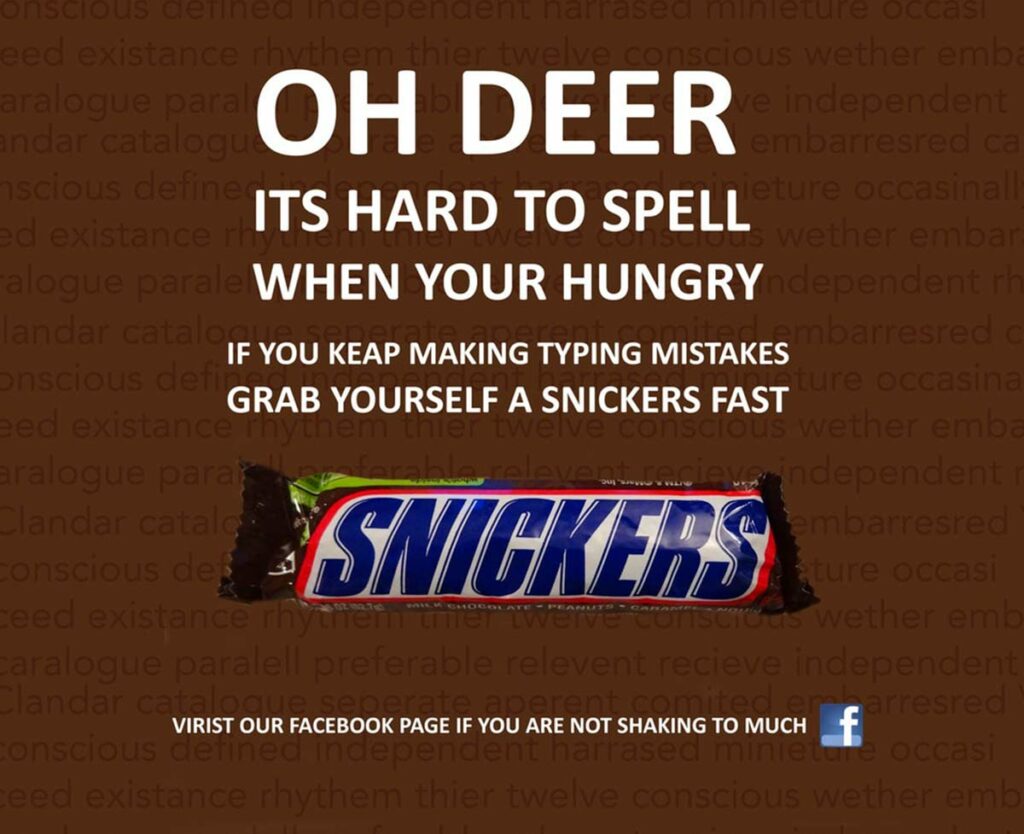
4. What brands/person do you aspire to be?
Now, think of the people, fictional characters, or brands that speak to you. Are there some that you aspire to be like?
If you admire the lone wolf Arya Stark from Game of Thrones or want your brand to be a disruptor like MTV – you probably identify with the outlaw.
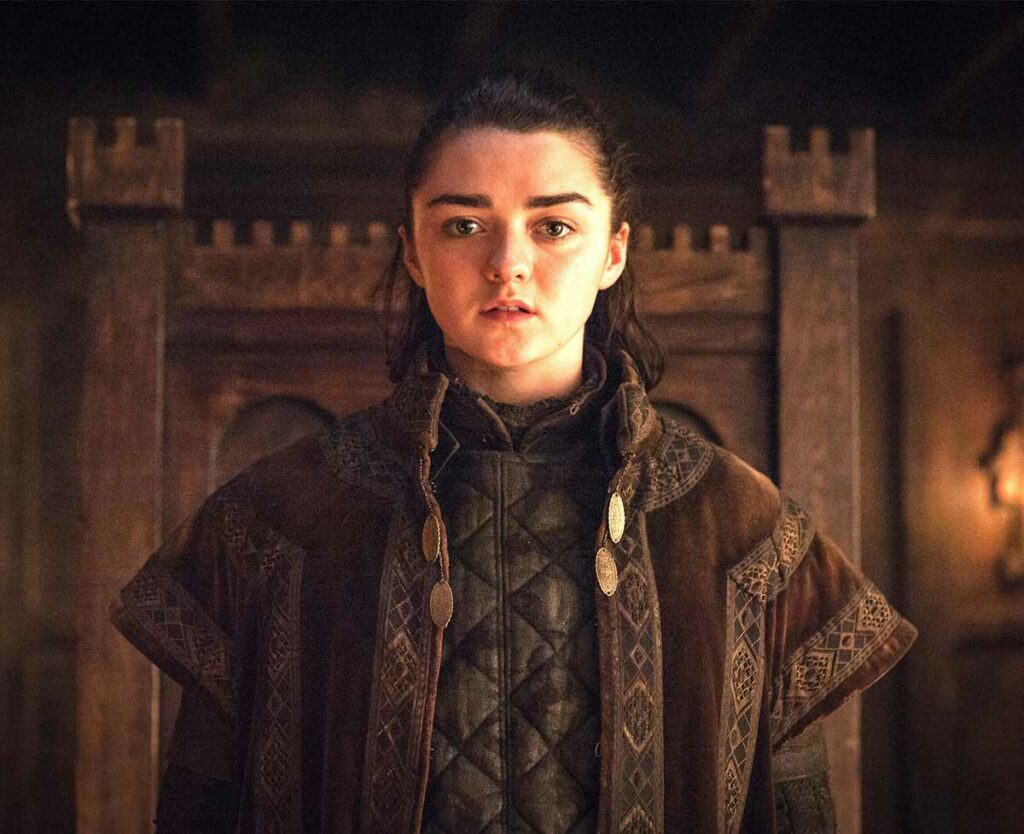
5. What brand/person is the opposite of what you want to be?
Naturally, if you want to be like someone, there will be someone or something you DON’T want to be like.
Maybe you find the aggressive nature of Harley Davidson off-putting, and find brands like Tesla to be too elitist.
Instead, your brand looks at embracing everyone and forming a community where everyone is treated equally. In that case, it can be an everyman brand- like Target.
6. What adjectives will you use to define your brand?
Write down the words or phrases you can use to describe your brand. Is it sensuous, indulgent and makes you feel special?
Then you have a lover brand- like Haagen Dazs. On the other hand, if it is wholesome, pure, and authentic- your brand is innocent, like Aveeno.
Now that you have all the required information, it is time to finally create a distinct personality for your brand.
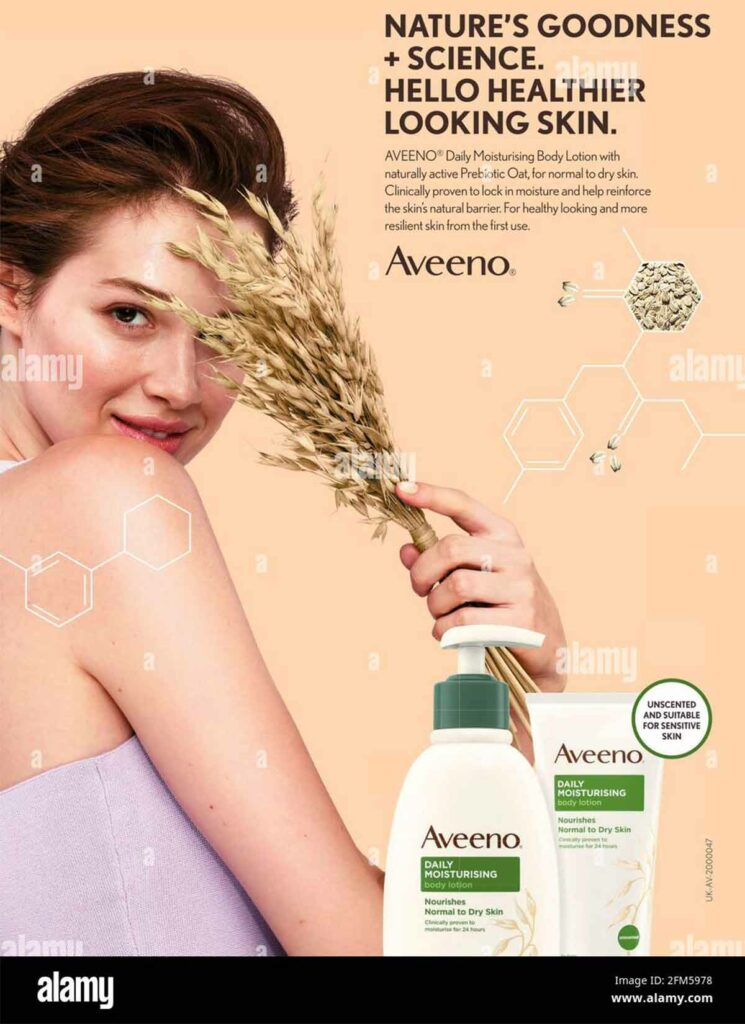
Fine tune your brand’s personality to appeal better to your audiences
Remember- figuring out your brand’s archetype is merely the first step in fleshing out your brand’s personality.
Every archetype is home to multiple brands- often from the same space. For example, sports brands like Nike and Adidas are both heroes.
However, they have their distinct personalities- which manifests in their communication.
Think of your brand as a living entity. What attributes do you give it?
Visuals
How will it look? Think of the imagery, colors, icons, fonts, and illustrations.
Sounds
What will it sound like? Is the voice feminine? Does it sound professional or flamboyant? Is it gravelly or lilting? Is there any music or song you can think of?
Texture
Is it rough to the touch or satin smooth? Does it feel like wood or metal or cotton? Is it warm or cold? Dry or wet?
Smell
Does it smell summery or like old leather? Is it musky or floral? Does the smell remind you of fresh hay or of the sea or the forest?
A sensory exploration of your brand will help you give it a more life-like shape. Look at your brand’s vision, mission, values, target audiences, and USP, and you can create a unique personality for it.
Conclusion
Archetypes are useful for marketers because they give them a skeleton on to build their brand.
If you can flesh out your brand’s personality- you will have a clear idea about how to communicate with your audiences.
That will help you drive engagement and eventually- sell more. In other words- creating your brand’s unique identity gives you an edge over competitors; and sets it on the path for long-term growth.
And it all starts with figuring out your brand’s archetype.
If finding out your brand archetype seems like a daunting task- talk to team BrandLoom.
Frequently Asked Questions
What is an archetype?
An archetype is the typical representation of any group of things or people. In the case of psychology, archetypes are a set pattern of behaviors and personality traits that influence people’s actions.
According to psychiatrist Carl Jung, we carry these archetypes in our unconscious- and each person exhibits the traits of one dominant archetype.
In fiction or movies, we can often identify characters’ archetypes just by looking at them- the world-weary detective, the wise man with foresight, the femme fatale with a hidden agenda, the queen who wants to bring peace to the kingdom.
Archetypes are also used by branding experts to flesh out the characters of their brands. If you want it for yours- we are here.What are brand archetypes?
Brand archetypes are the set of personality traits, desires, fears, and mottos that define a brand. If a brand is a person- the archetype that person belongs to also applies to the brand. Marketers can flesh out a brand’s personality by figuring out what archetype it belongs to.
Brand archetypes can help you create a distinct identity for your brand. This sets you apart from your competitors and also gives you clarity on your communication style. Defining your brand’s personality makes it sound more confident and also drives more engagement.
Some examples are:
Nike- Hero
Target- Everyman
Apple- Creator
Old Spice- Jester
Victoria’s Secret- Lover.
If you want to know what archetype is your brand- talk to us.What are the 12 brand archetypes?
There are 12 brand archetypes-
The Innocent- Dove, Whole Foods
The Sage- BBC, Harvard University
The Explorer- Patagonia, The North Face
The Outlaw- Red Bull, Harley Davidson
The Magician- Disney, MAC Cosmetics
The Hero- BMW, FedEx
The Lover- Chanel, Haagen Dazs
The Jester- Skittles, Snickers
The Everyman- Target, IKEA
The Caregiver- Unicef, WWF
The Ruler- Louis Vuitton, Rolex
The Creator- Lego, AppleHow to use brand archetypes?
You can use an archetype to start building your archetype. Every archetype is associated with some values, desires, goals, attitudes, and fears. Looking at an archetype gives you an idea of the kind of brand you can build with it. By understanding the archetype for your brand, you can:
Flesh out its personality
Decide on its tone of voice
Design a more effective communication strategy
The more clarity you have on your brand’s personality and its tone of voice, the better your communication strategy will be. If you need help with either- talk to our branding experts.What is the purpose of archetypes in branding?
Archetypes in branding act as guides to flesh out brands’ personalities. If you know the archetype your brand belongs to, you will have a fair idea about what it should sound or look like.
For example, a hero brand is inspirational and determined- it cannot sound like an irreverent brand like Old Spice. A lover brand is indulgent and sensuous- you can associate dark red with it; but not navy blue.
Archetypes can help you create effective communication strategies. They can guide you in building customer relationships and engaging your audience. If you want to know which one is right for your brand- talk to us.

